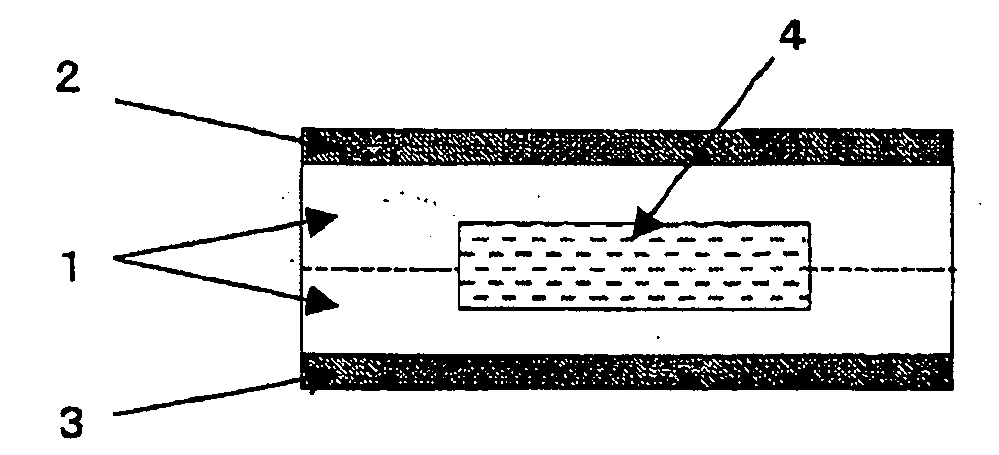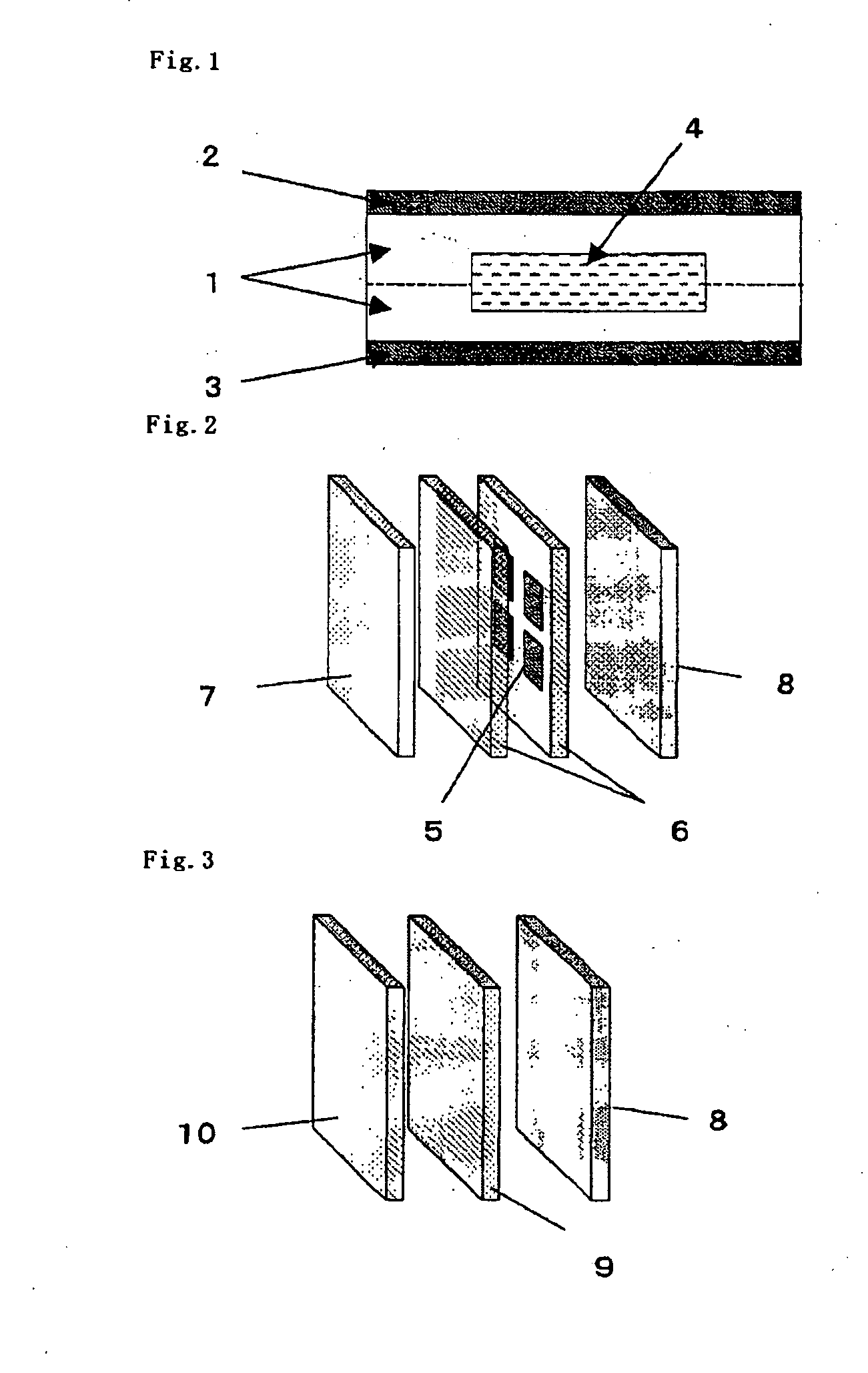Thermoplastic resin composition for sealing solar cell, sheet for sealing solar cell and solar cell
a solar cell and thermoplastic resin technology, applied in the direction of photovoltaic energy generation, electrical equipment, semiconductor devices, etc., can solve the problems of reducing the effect exerted on the power module, reducing the efficiency of power generation, and inhibiting high speed productivity, etc., to achieve the effect of reducing the time required, reducing the effect of thermal insulation, and excellent heat resistan
- Summary
- Abstract
- Description
- Claims
- Application Information
AI Technical Summary
Benefits of technology
Problems solved by technology
Method used
Image
Examples
example 1
[0233]VMMS 0.5 part by weight, PH25B 0.09 part by weight and M-60 0.02 part by weight were kneaded (190° C., 3 minutes, 40 rpm) with total 100 parts by weight of iPP (a-1) 20 parts by weight and PBER (b-1) 80 parts by weight by means of a lab plastomill (manufactured by Toyo Seiki Seisaku-sho, Ltd.) to obtain a thermoplastic resin composition.
[0234]The above thermoplastic resin composition was processed by means of a press molding machine (heated at 190° C. for 7 minutes and then cooled) to prepare a pressed sheet (sealing sheet sample) having a thickness of 500 μm and a pressed sheet (for evaluating MFR, flexibility, heat resistance and stress absorbing property) having a thickness of 2 mm as a sheet for sealing a solar cell.
[0235]The above pressed sheet having a thickness of 2 mm was used as a test piece to evaluate a sheet for sealing a solar cell by a method described later. The results thereof are shown in Table 2.
[0236]As shown in FIG. 2, an aluminum plate having a thickness o...
example 2
[0252]A thermoplastic resin composition was prepared by the same method as in Example 1, except that iPP (a-1) and PBER (b-1) were changed to 20 parts by weight of sPP (a-2) and 80 parts by weight of PER (b-2) to prepare a pressed sheet and samples for various tests, and the sheet for sealing a solar cell was evaluated. The results of the evaluations are shown in Table 2.
example 3
[0253]A thermoplastic resin composition was prepared by the same method as in Example 1, except that 20 parts by weight of iPP (a-1) was changed to 20 parts by weight of sPP (a-2) to prepare a pressed sheet and samples for various tests, and the sheet for sealing a solar cell was evaluated. The results of the evaluations are shown in Table 2.
PUM
| Property | Measurement | Unit |
|---|---|---|
| melting point | aaaaa | aaaaa |
| thermoplastic | aaaaa | aaaaa |
| weight | aaaaa | aaaaa |
Abstract
Description
Claims
Application Information
 Login to View More
Login to View More - R&D
- Intellectual Property
- Life Sciences
- Materials
- Tech Scout
- Unparalleled Data Quality
- Higher Quality Content
- 60% Fewer Hallucinations
Browse by: Latest US Patents, China's latest patents, Technical Efficacy Thesaurus, Application Domain, Technology Topic, Popular Technical Reports.
© 2025 PatSnap. All rights reserved.Legal|Privacy policy|Modern Slavery Act Transparency Statement|Sitemap|About US| Contact US: help@patsnap.com



